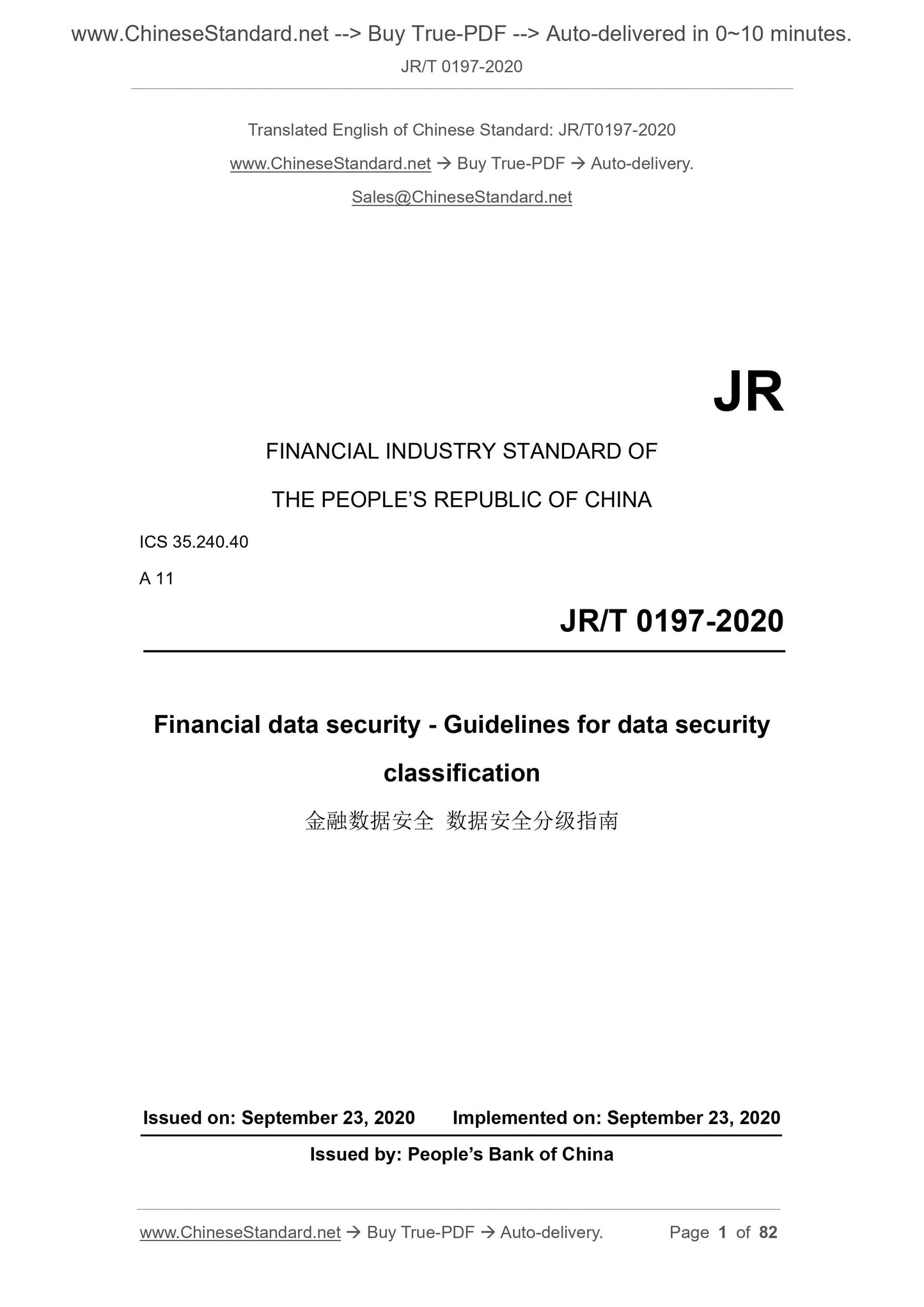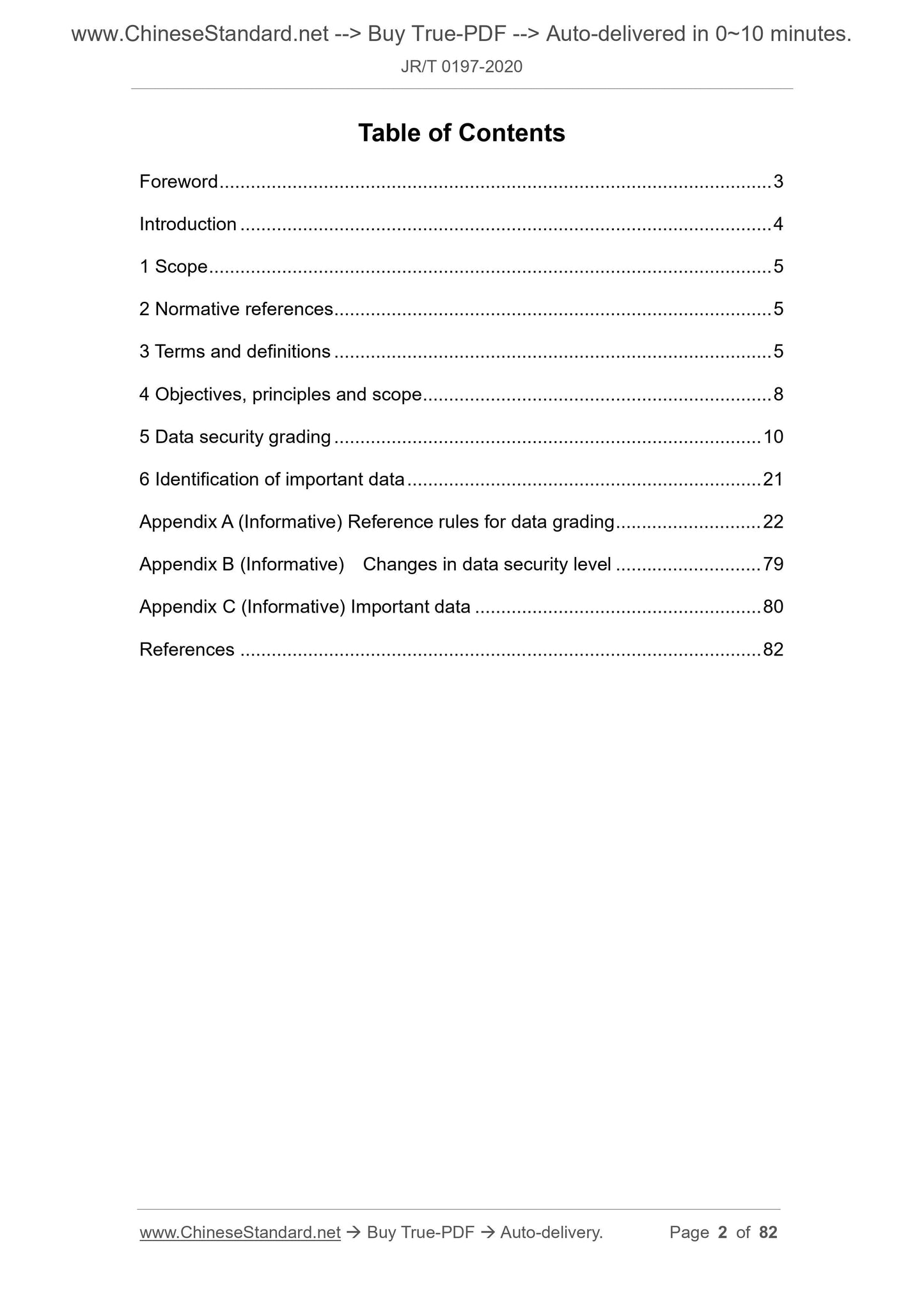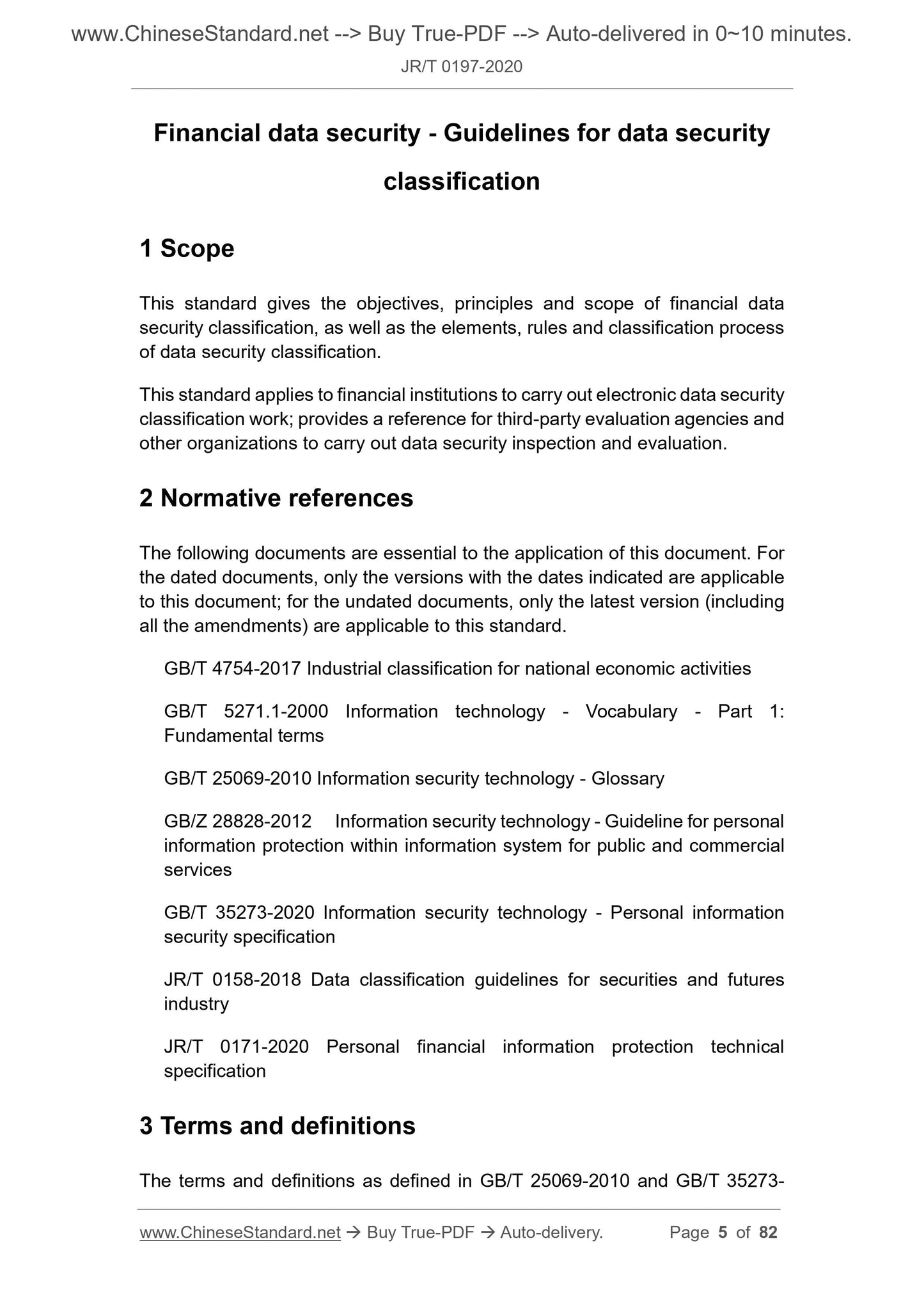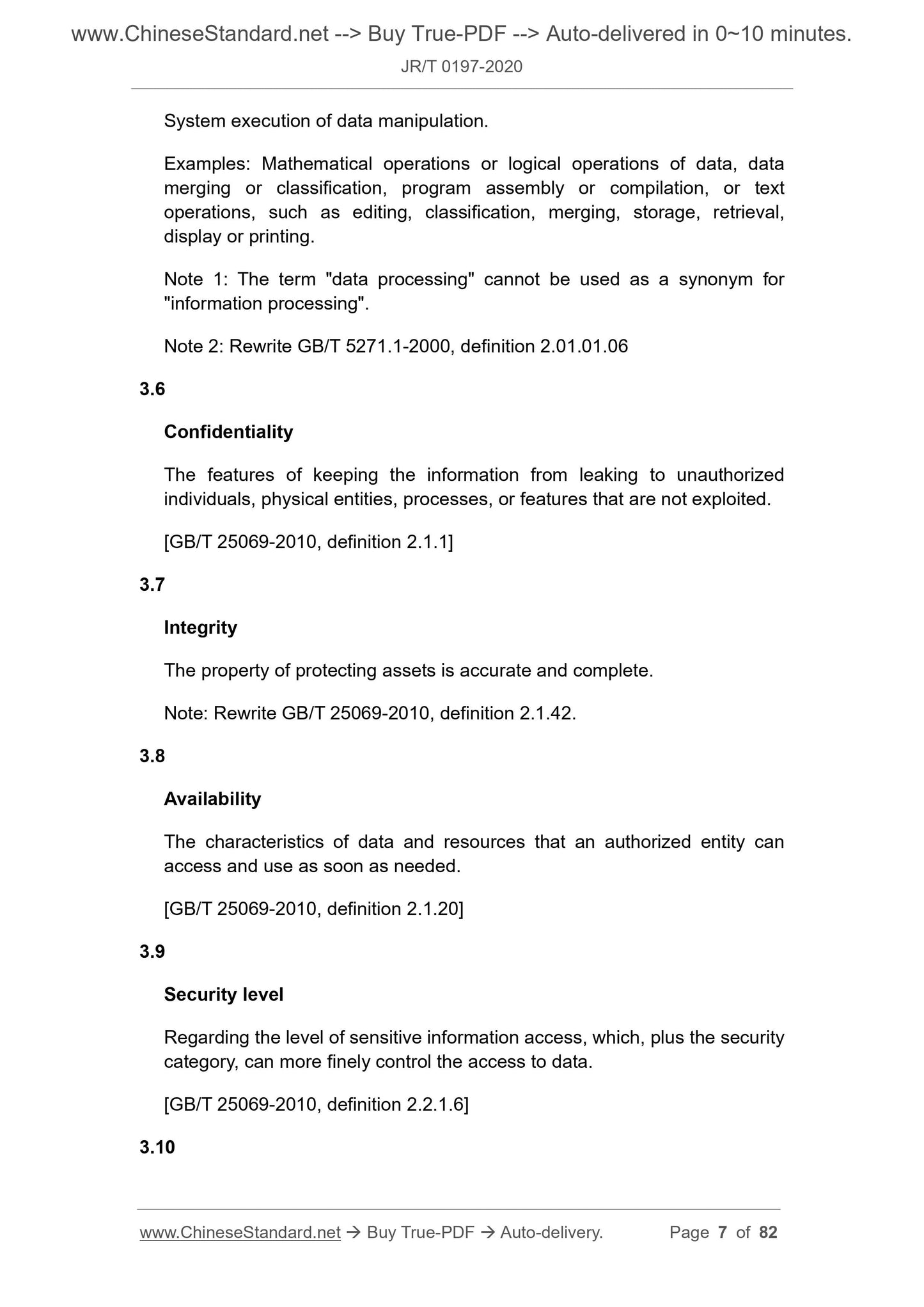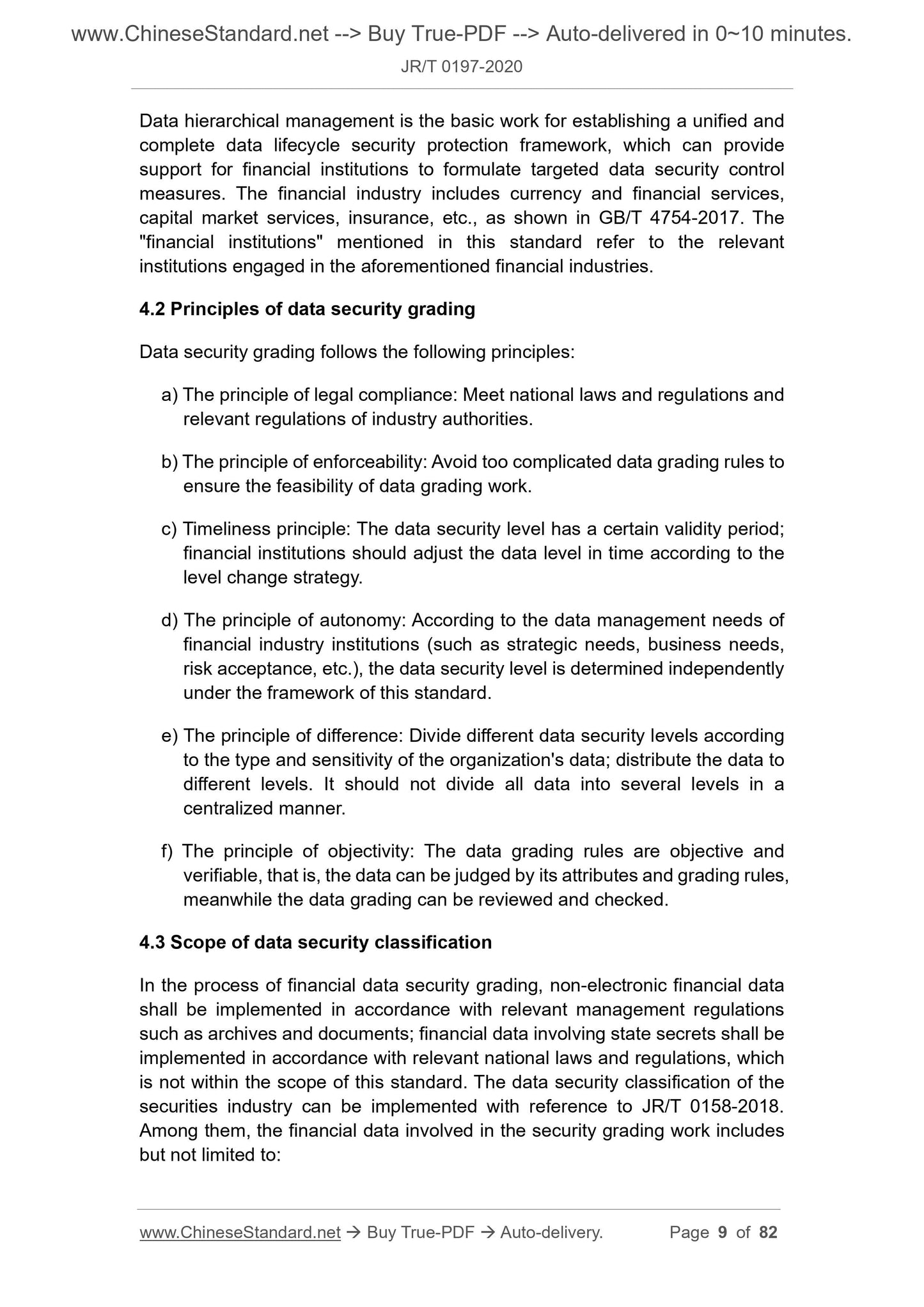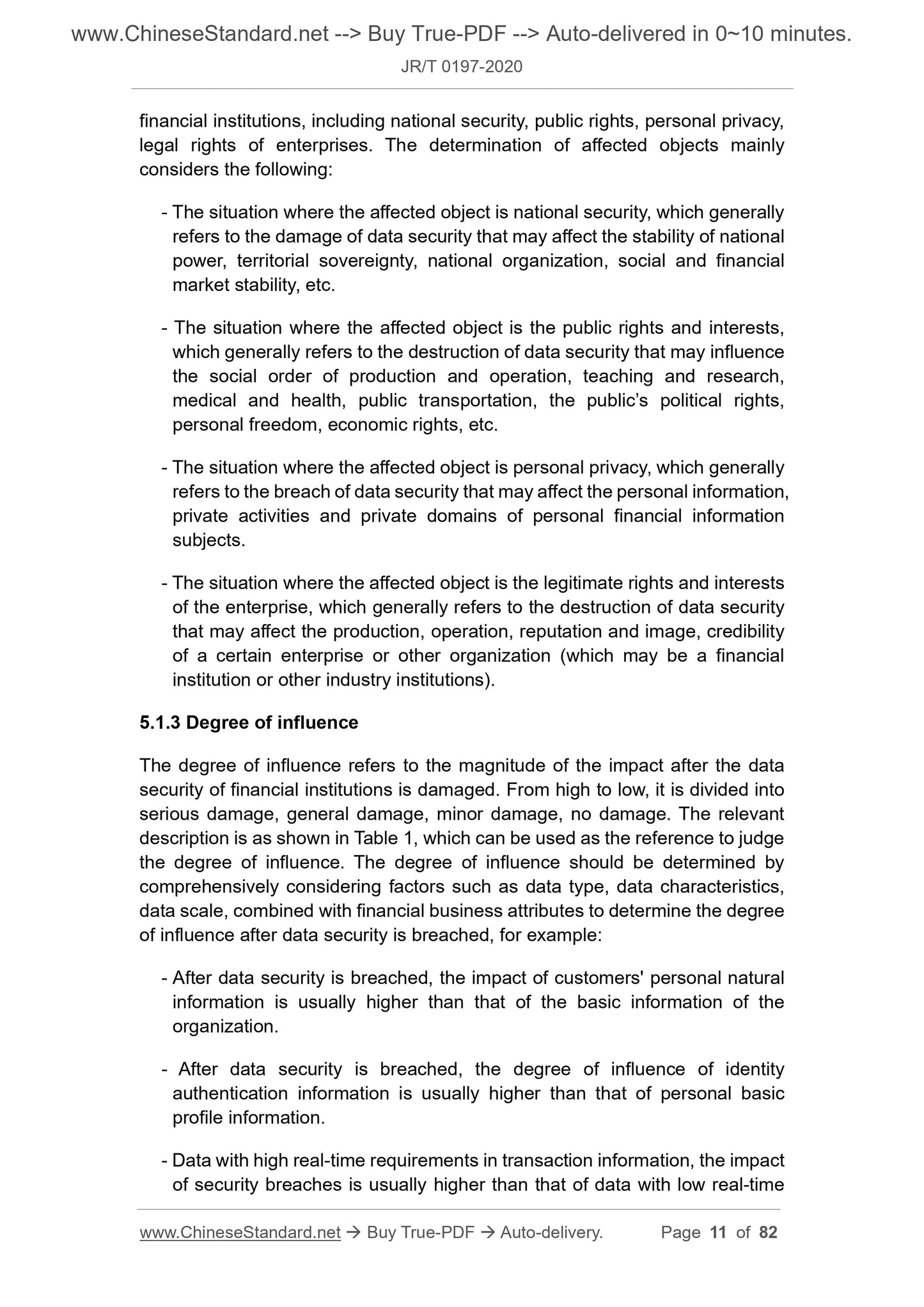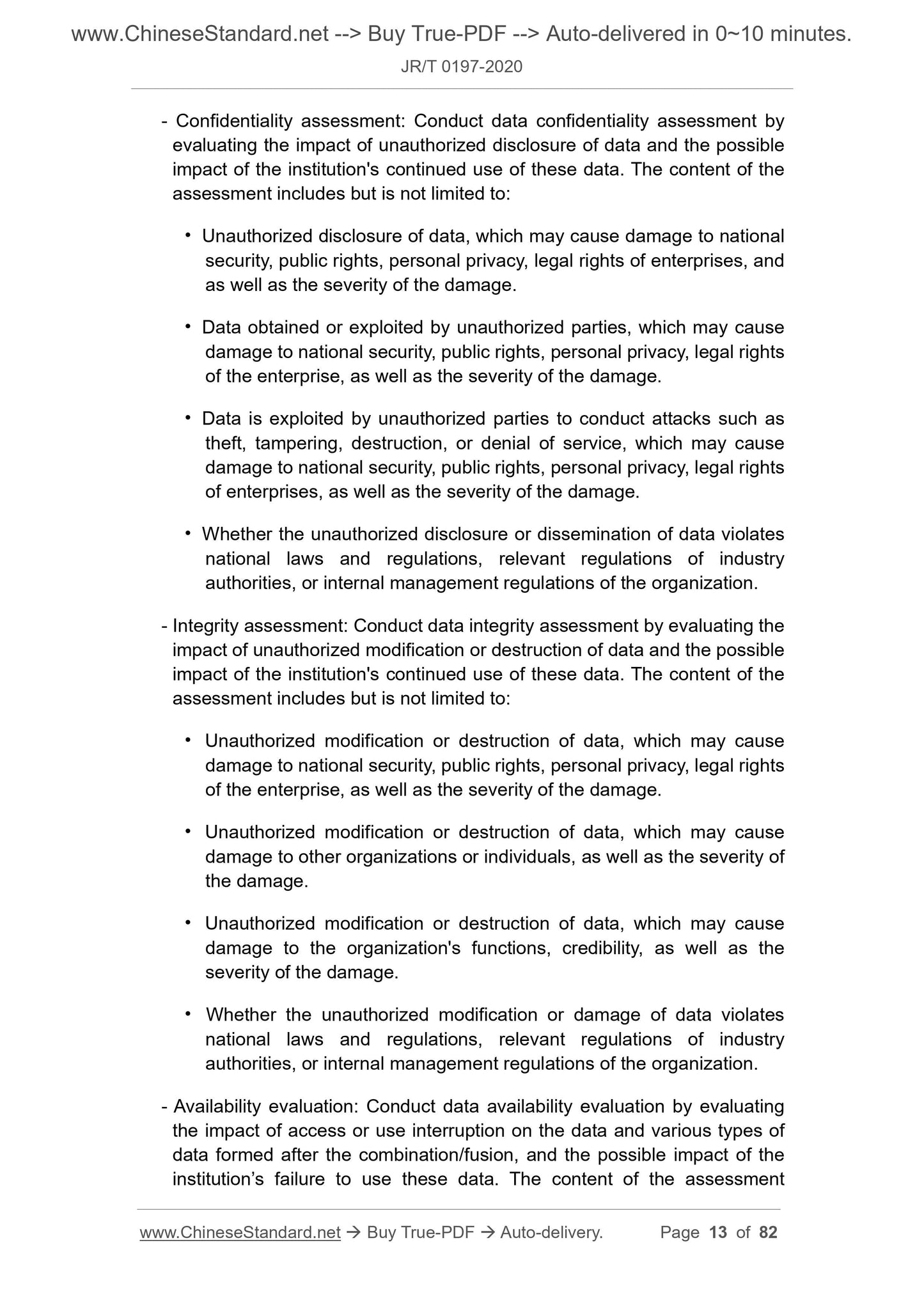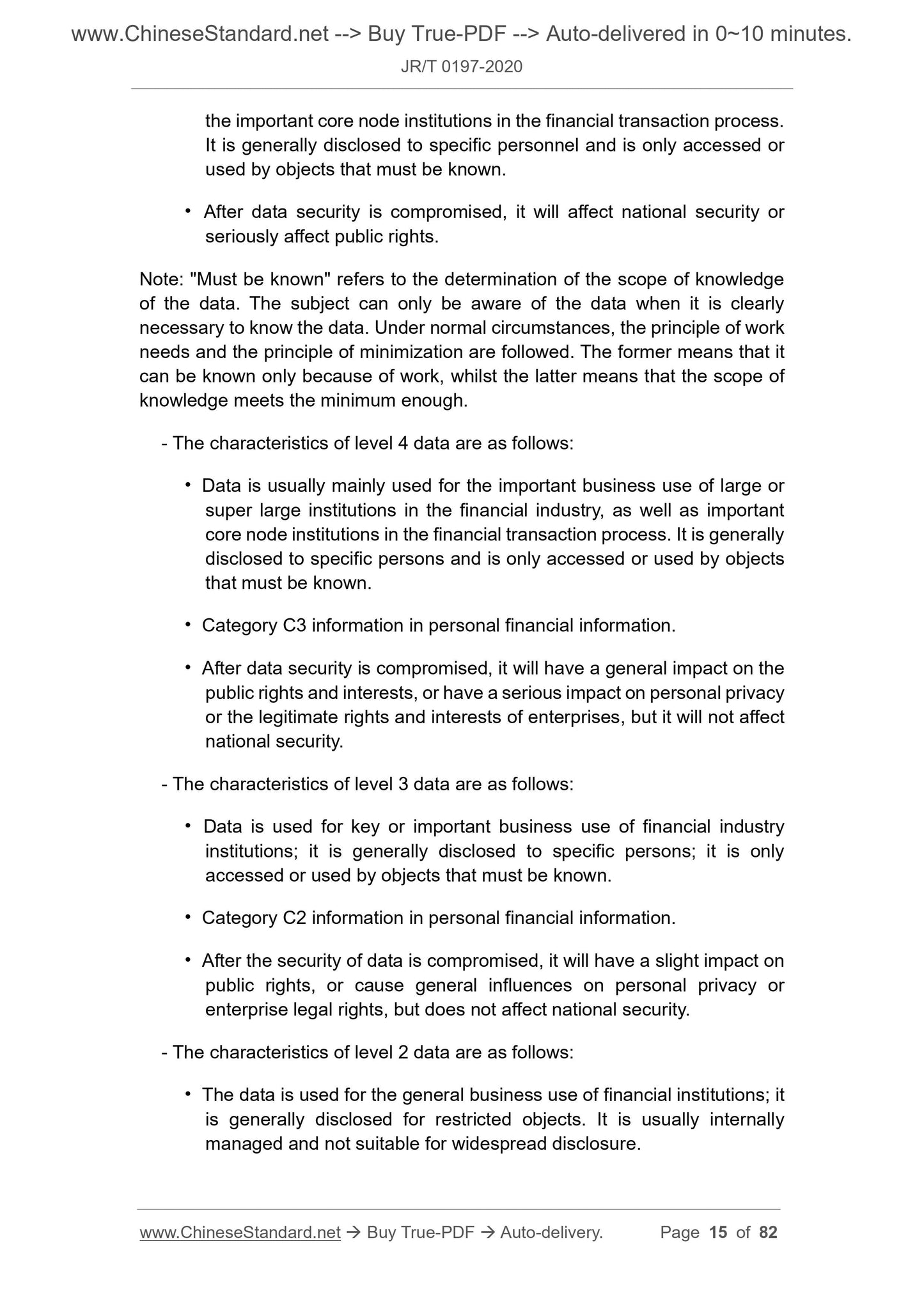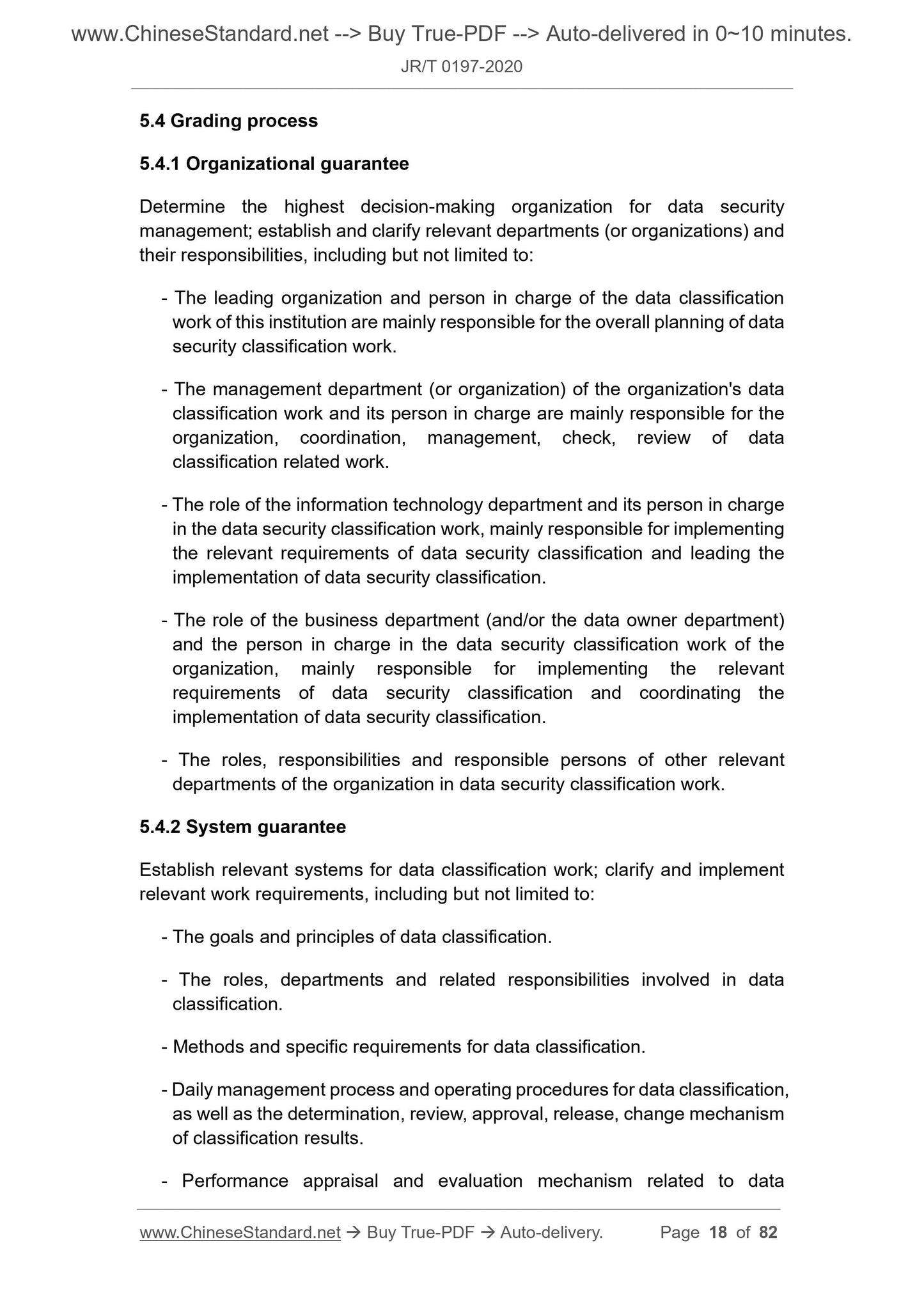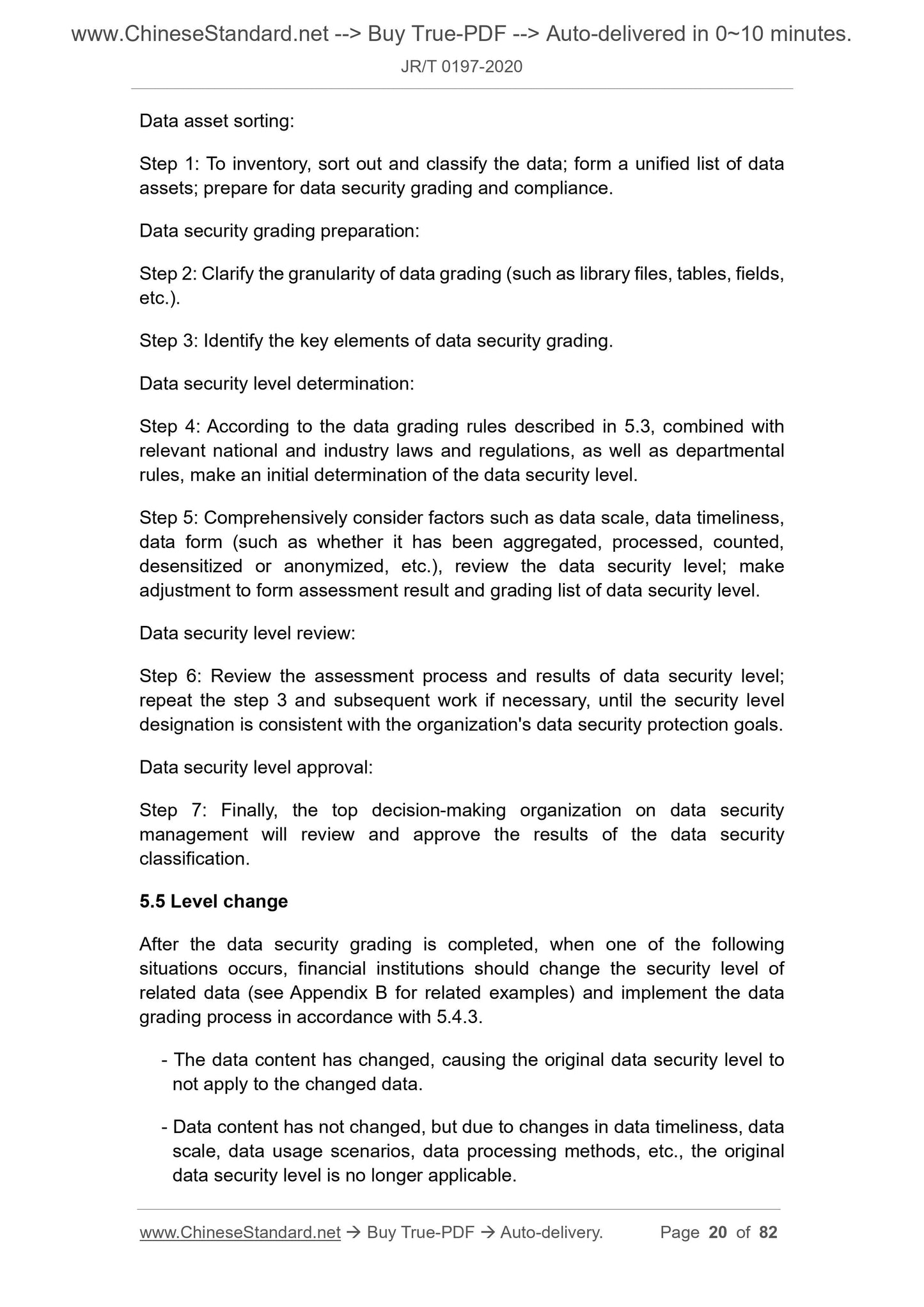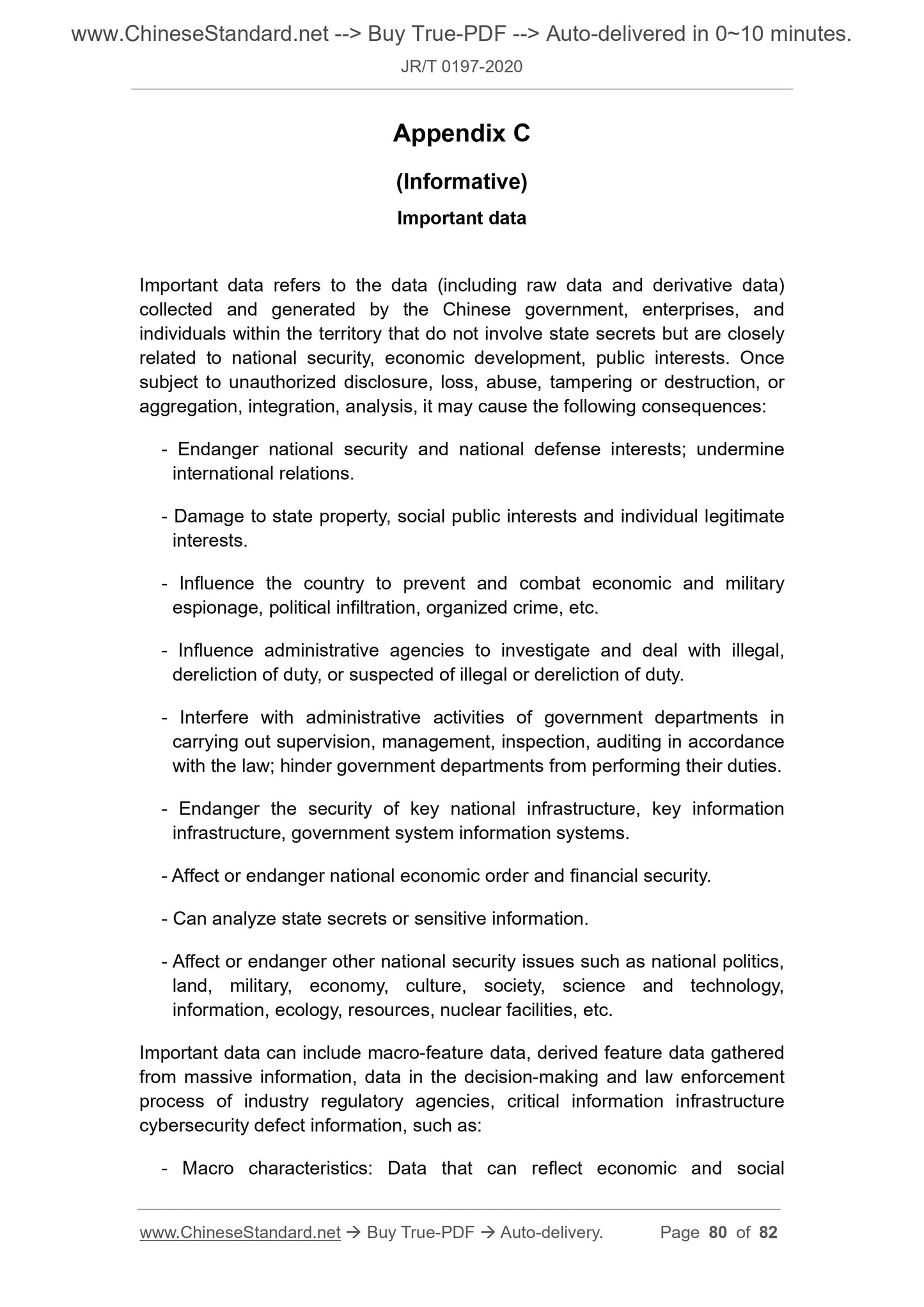1
/
of
11
www.ChineseStandard.us -- Field Test Asia Pte. Ltd.
JR/T 0197-2020 English PDF (JR/T0197-2020)
JR/T 0197-2020 English PDF (JR/T0197-2020)
Regular price
$955.00
Regular price
Sale price
$955.00
Unit price
/
per
Shipping calculated at checkout.
Couldn't load pickup availability
JR/T 0197-2020: Financial data security - Guidelines for data security classification
Delivery: 9 seconds. Download (and Email) true-PDF + Invoice.Get Quotation: Click JR/T 0197-2020 (Self-service in 1-minute)
Newer / historical versions: JR/T 0197-2020
Preview True-PDF
Scope
This standard gives the objectives, principles and scope of financial datasecurity classification, as well as the elements, rules and classification process
of data security classification.
This standard applies to financial institutions to carry out electronic data security
classification work; provides a reference for third-party evaluation agencies and
other organizations to carry out data security inspection and evaluation.
Basic Data
| Standard ID | JR/T 0197-2020 (JR/T0197-2020) |
| Description (Translated English) | Financial data security - Guidelines for data security classification |
| Sector / Industry | Finance Industry Standard (Recommended) |
| Classification of Chinese Standard | A11 |
| Word Count Estimation | 54,577 |
| Date of Issue | 2020-09-23 |
| Date of Implementation | 2020-09-23 |
| Regulation (derived from) | Industry Standard Filing Monthly Report, 2020 No. 9 (Total No. 245) |
| Issuing agency(ies) | People's Bank of China |
Share
